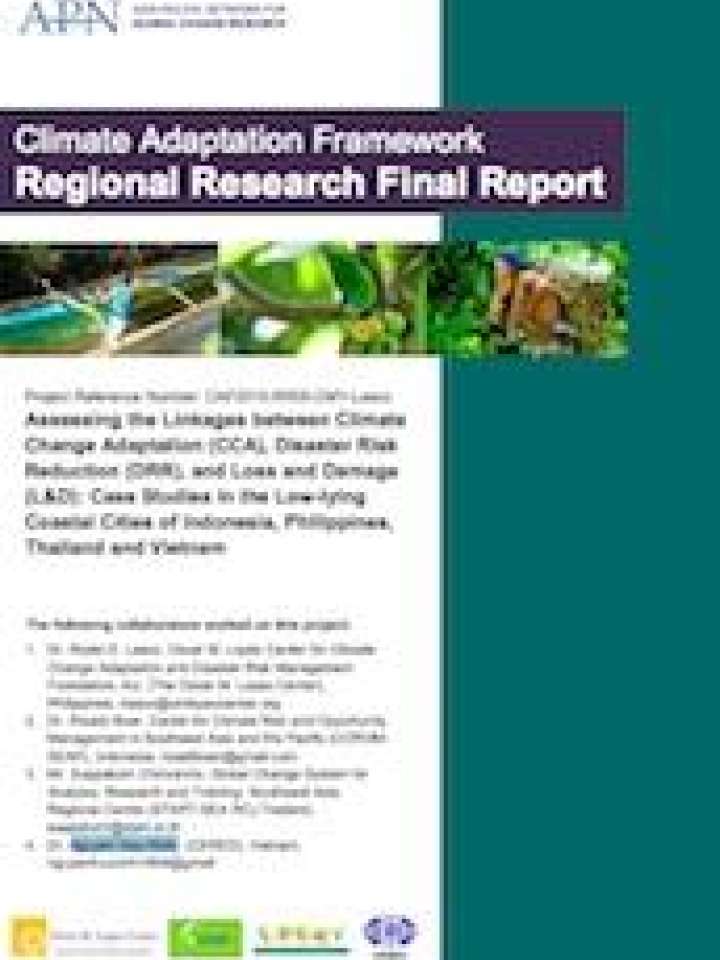Assessing the linkages between climate change adaptation (CCA), disaster risk reduction (DRR), and loss and damage (L&D): Case studies in the low-lying coastal cities of Cambodia, Indonesia, Philippines, Thailand and Vietnam
Climate-related disaster events are common phenomena in Southeast Asia, particularly in the low-lying major cities of Cambodia, Indonesia, Philippines, Thailand and Vietnam. With this in mind, this project intended to link loss and damage (L&D), disaster risk reduction (DRR) and climate change adaptation (CCA) synergistically through:
- Reviewing existing frameworks for assessing L&D due to climate-related disasters;
- Identifying emerging issues, gaps and opportunities in linking CCA, DRR and L&D assessments;
- Developing a robust framework in linking CCA, DRR and L&D assessments; and
- Recommending research and development (R&D) and a policy agenda for implementation.
The project employed a series of participatory approaches to gather relevant information about the topic. It also involved key actors from the communities and experts from various sectors (science, policy, and private). Ultimately, the main goal of the project was to reduce or avoid L&D, decrease vulnerability, and increase resiliency at the local, national, regional and even up to the global level.
The assessment on the current L&D mechanisms in Indonesia, Philippines, Thailand and Vietnam showed that most of these countries already have a structured mechanism for assessing L&D. The assessment also showed that each country has identified the set of key actors involved in the whole L&D system. But there are still numerous gaps in terms of addressing L&D for improving the adaptive capacity of each vulnerable country to the impacts of climate-related events. Nonetheless, the researchers developed initiatives that close identified gaps and vary according to the type of issues they target.
The highlight of this project was the initiative to develop a framework that integrates L&D-CCADRR. The framework involves a cyclic process of reducing or avoiding L&D associated with climate change impacts and increasing resilience by combining both CCA and DRR strategies through seven major components. When successfully operationalized, this framework is envisioned to ultimately reduce and avoid L&D, decrease vulnerability, and increase resiliency across multiple levels.
Explore further
